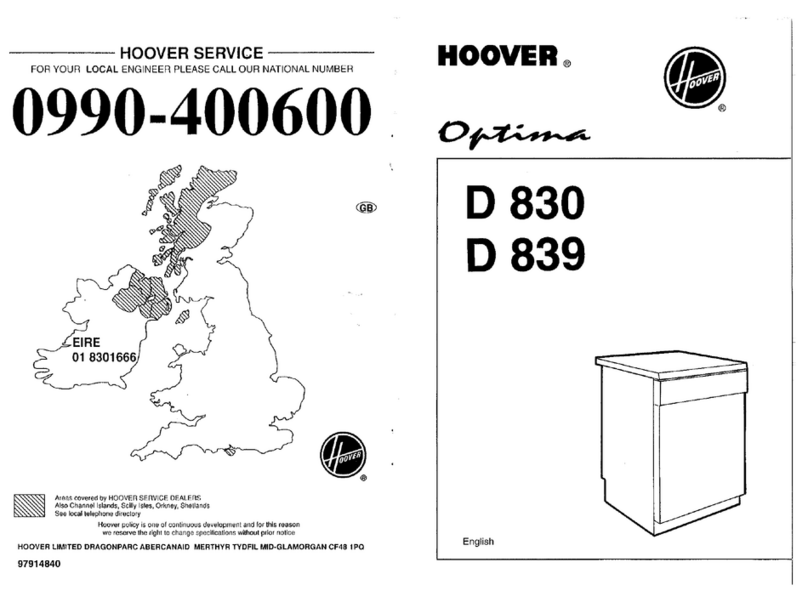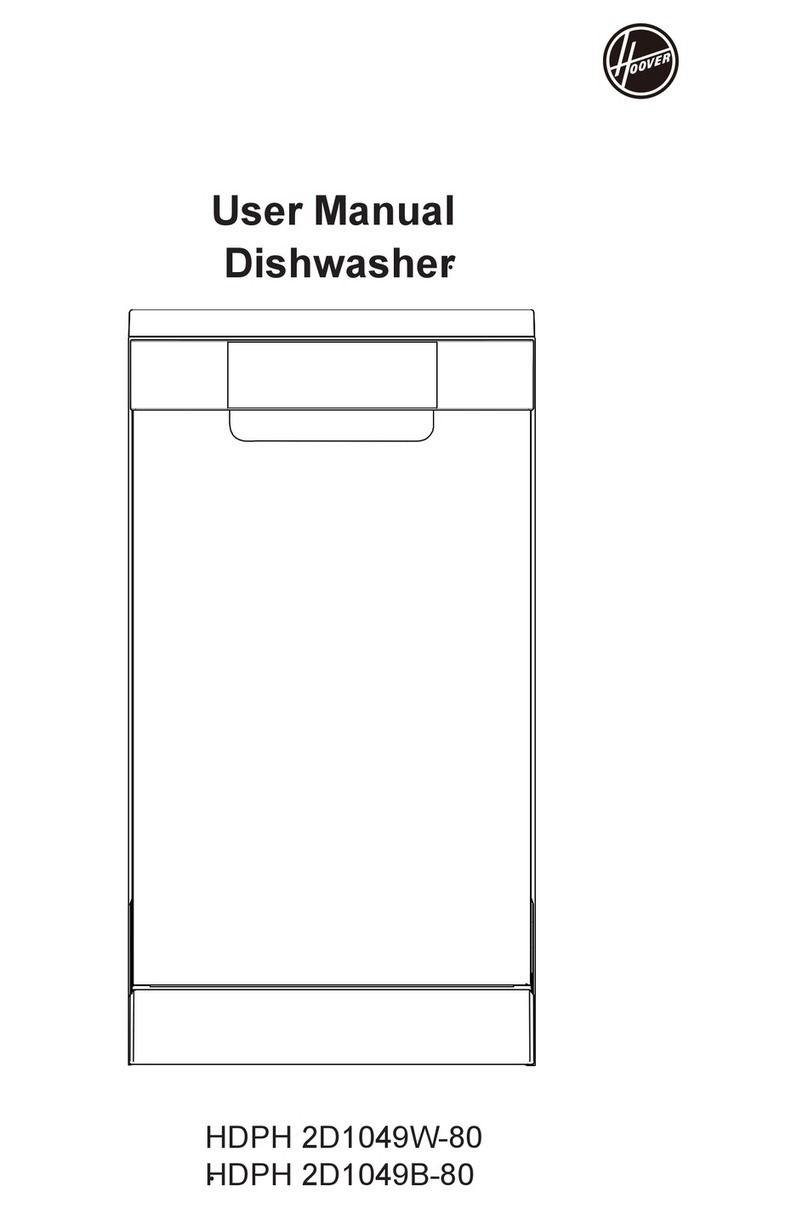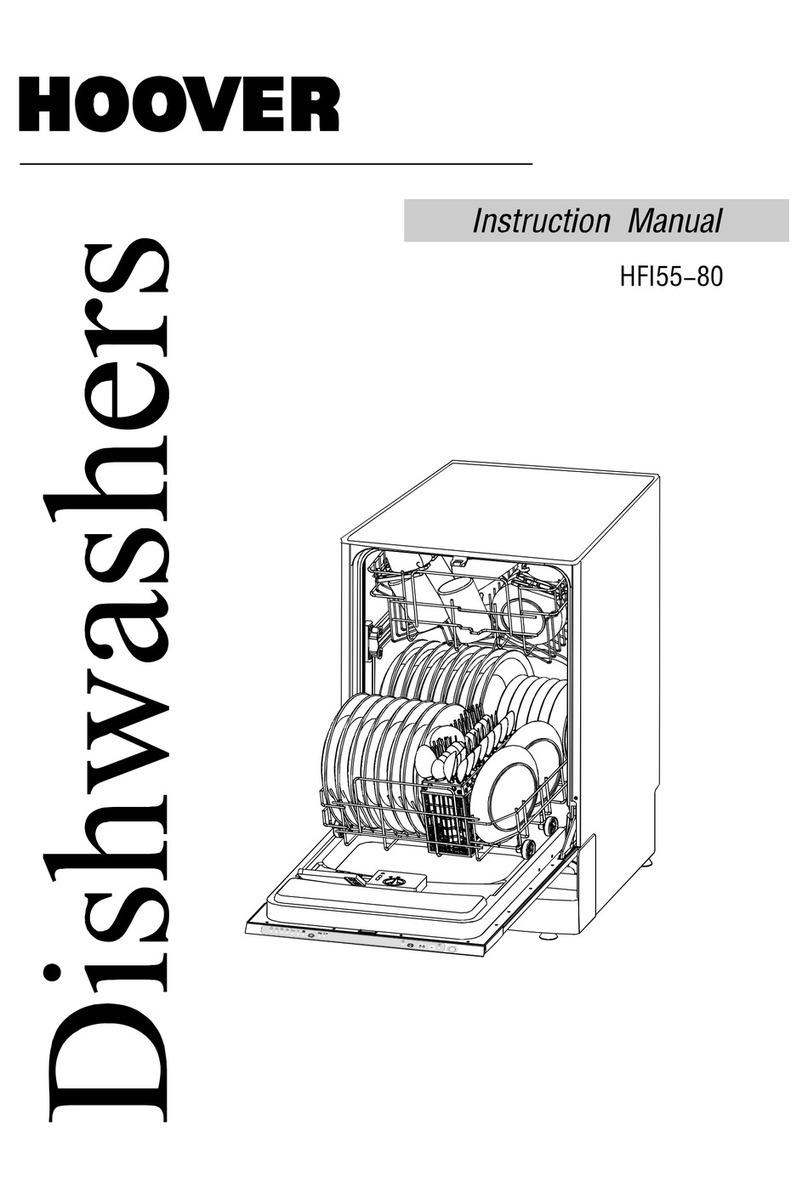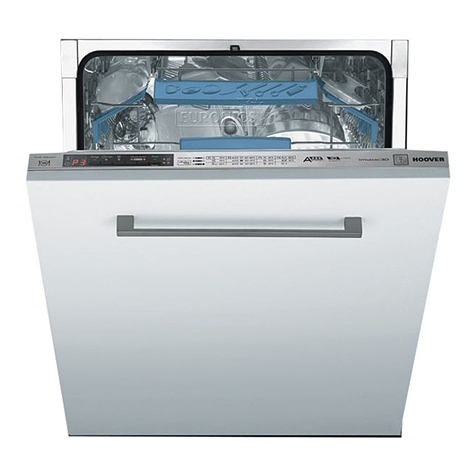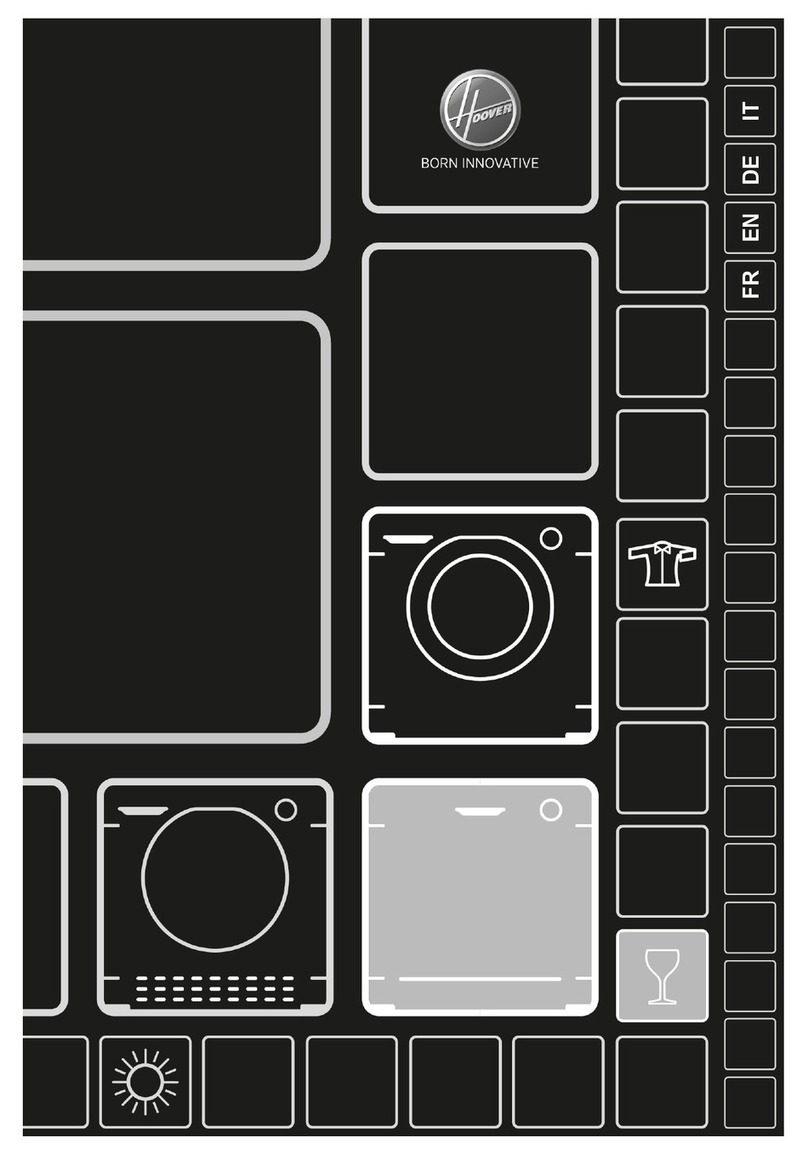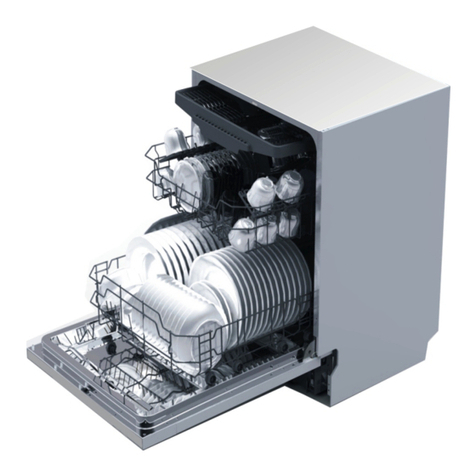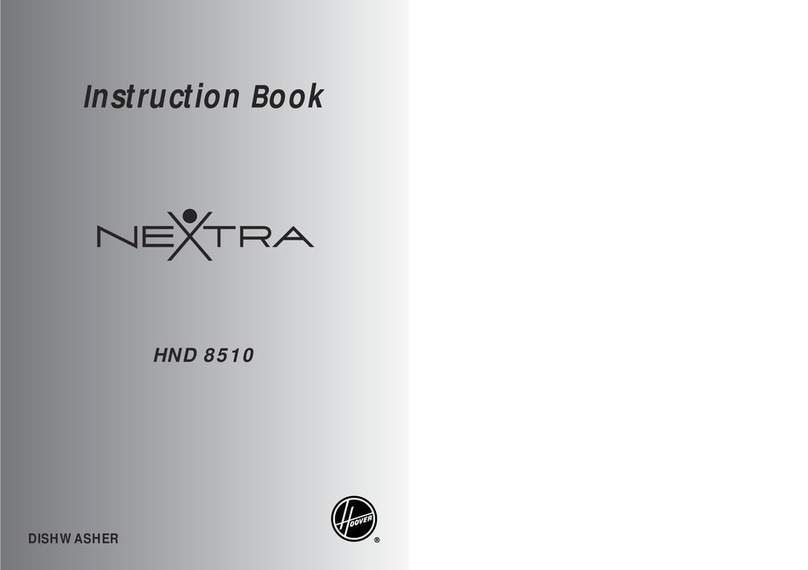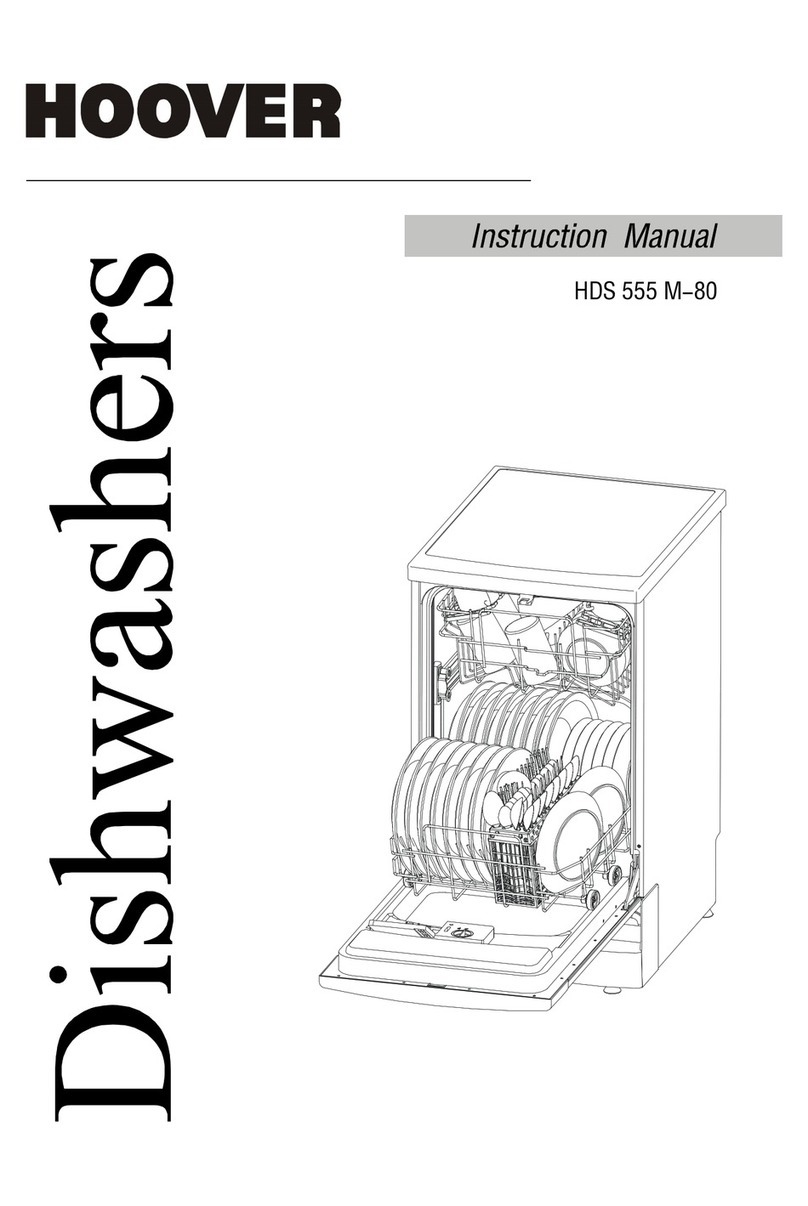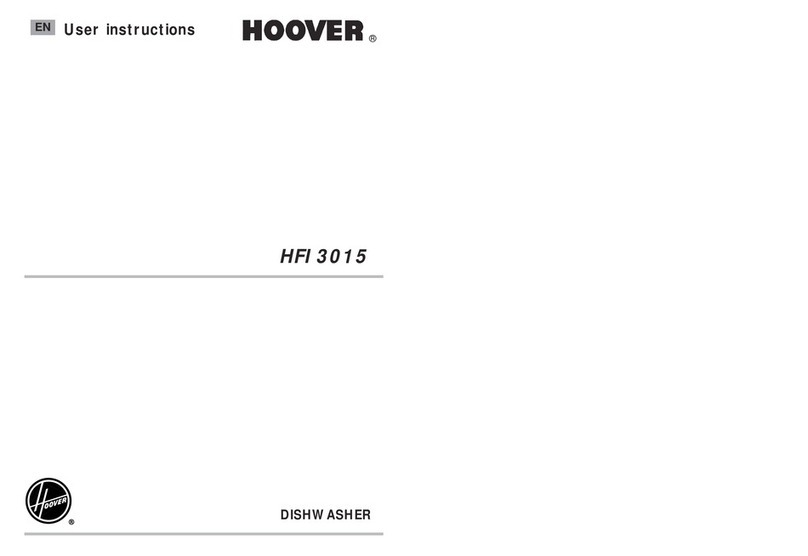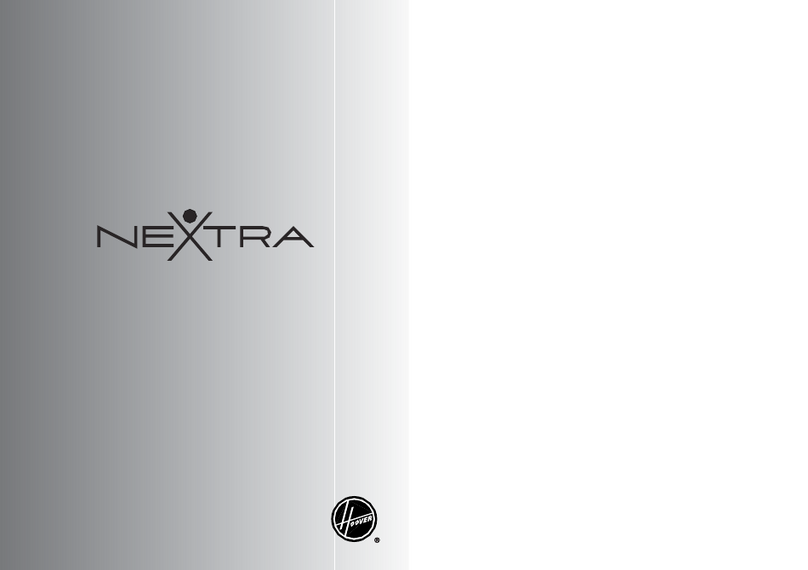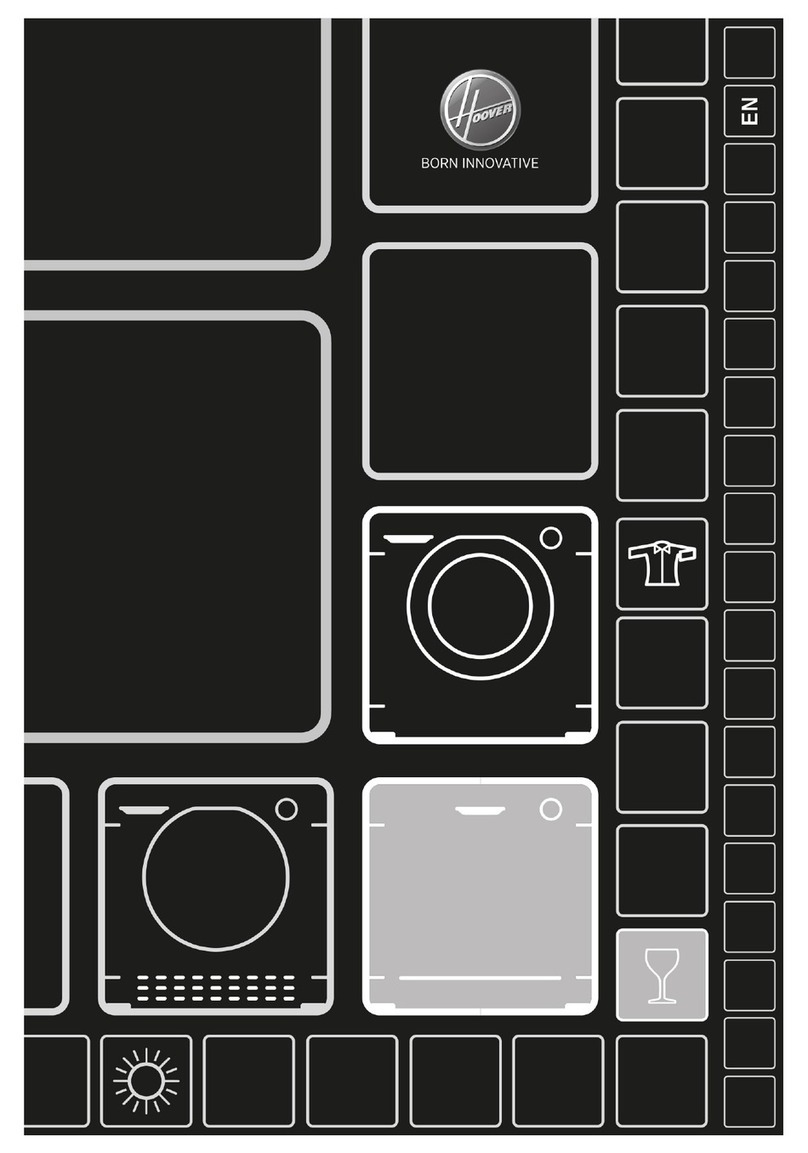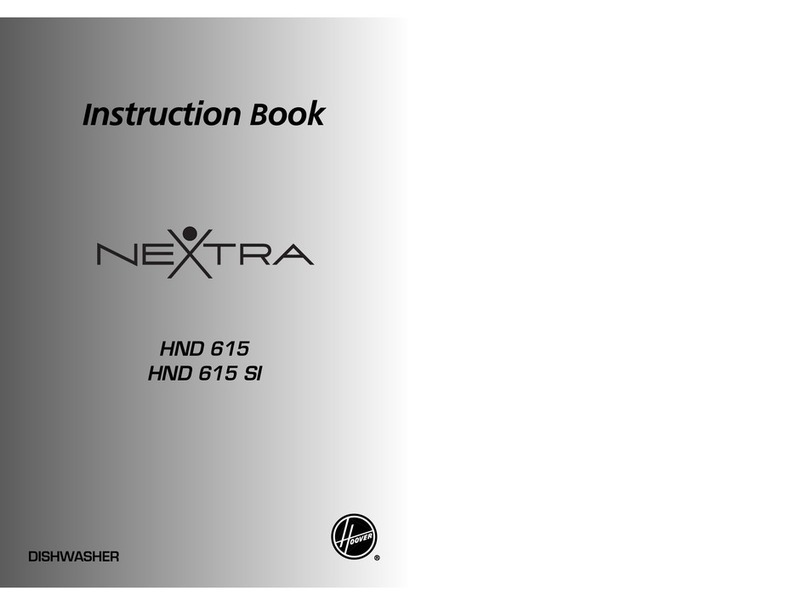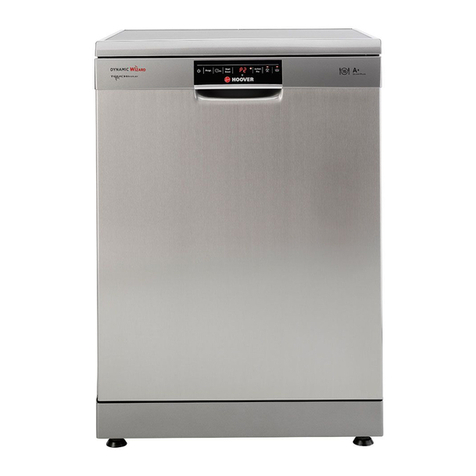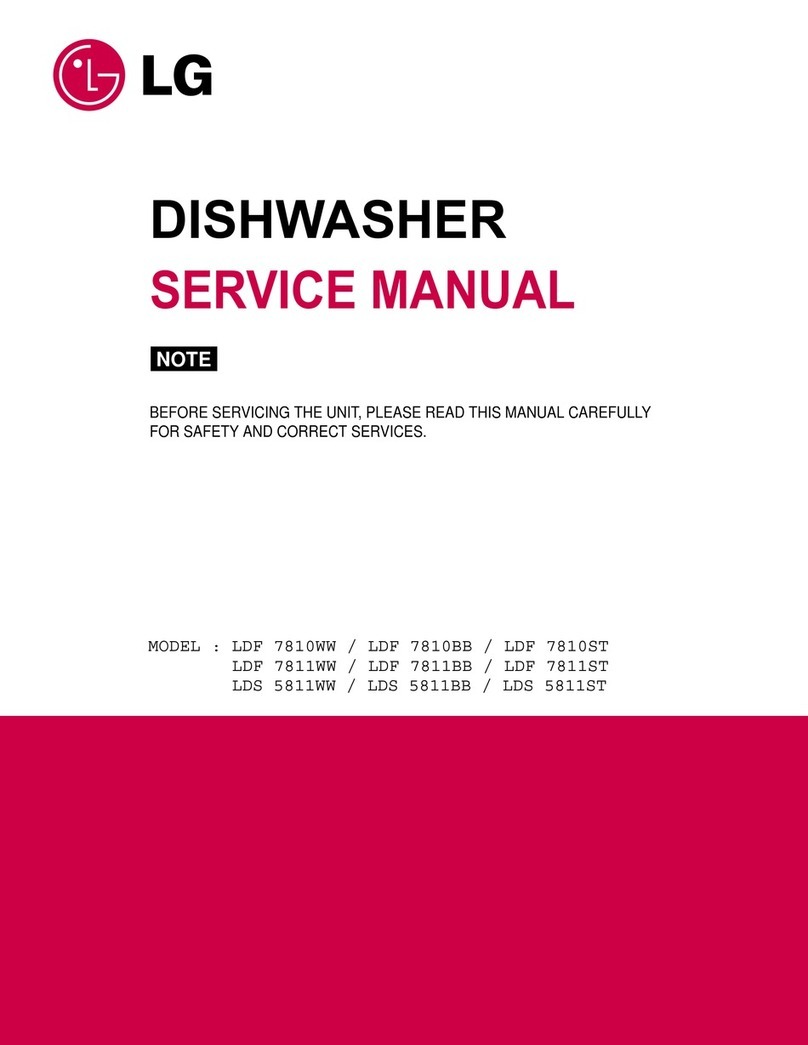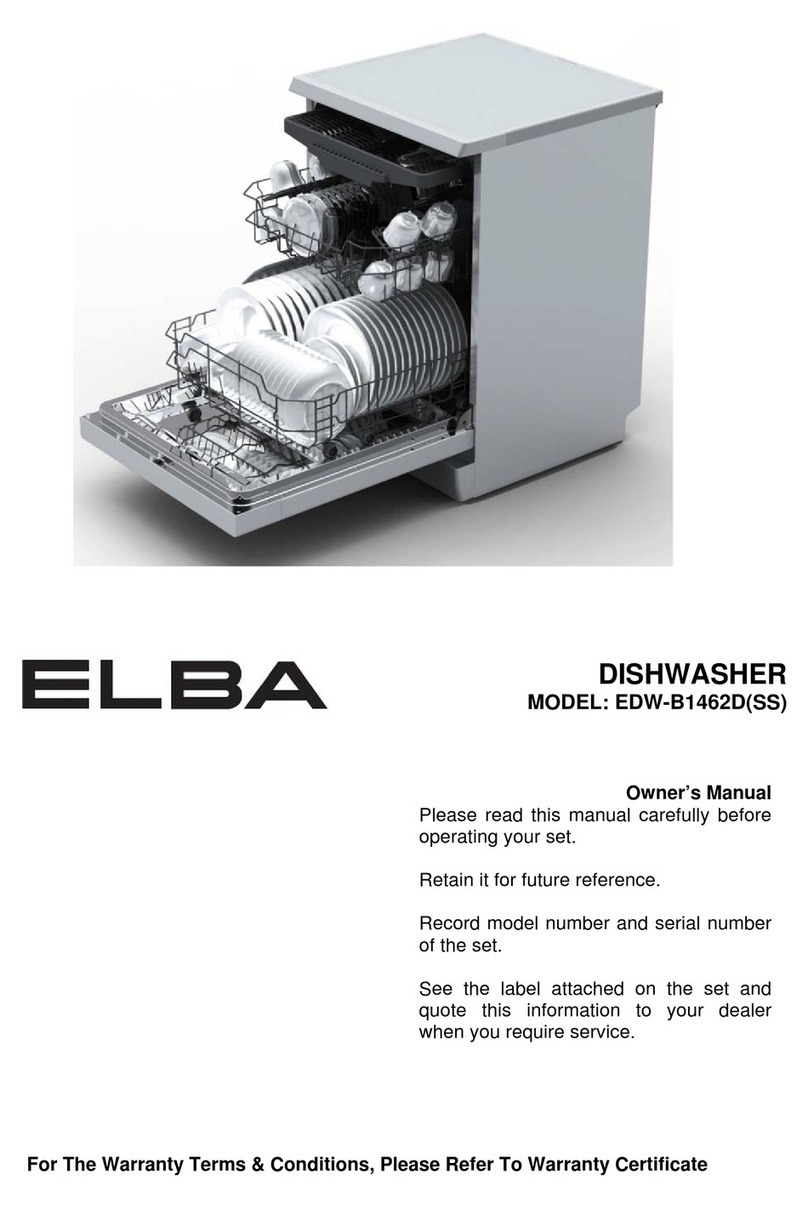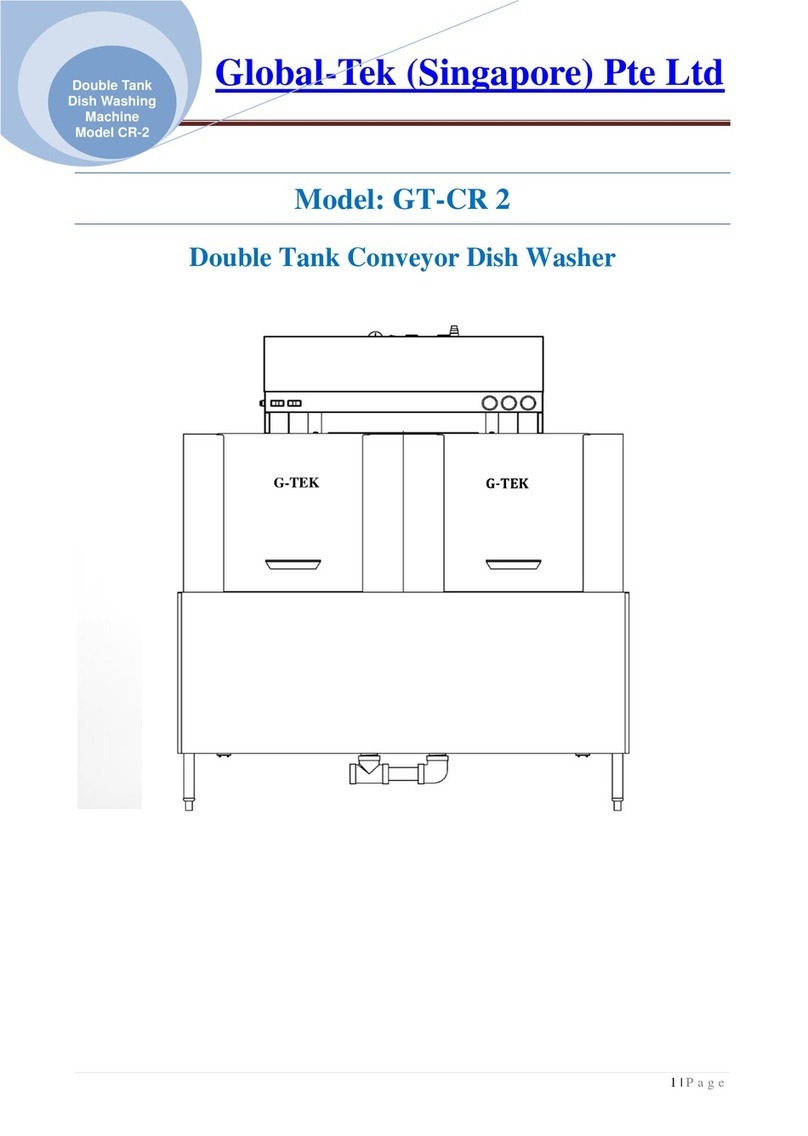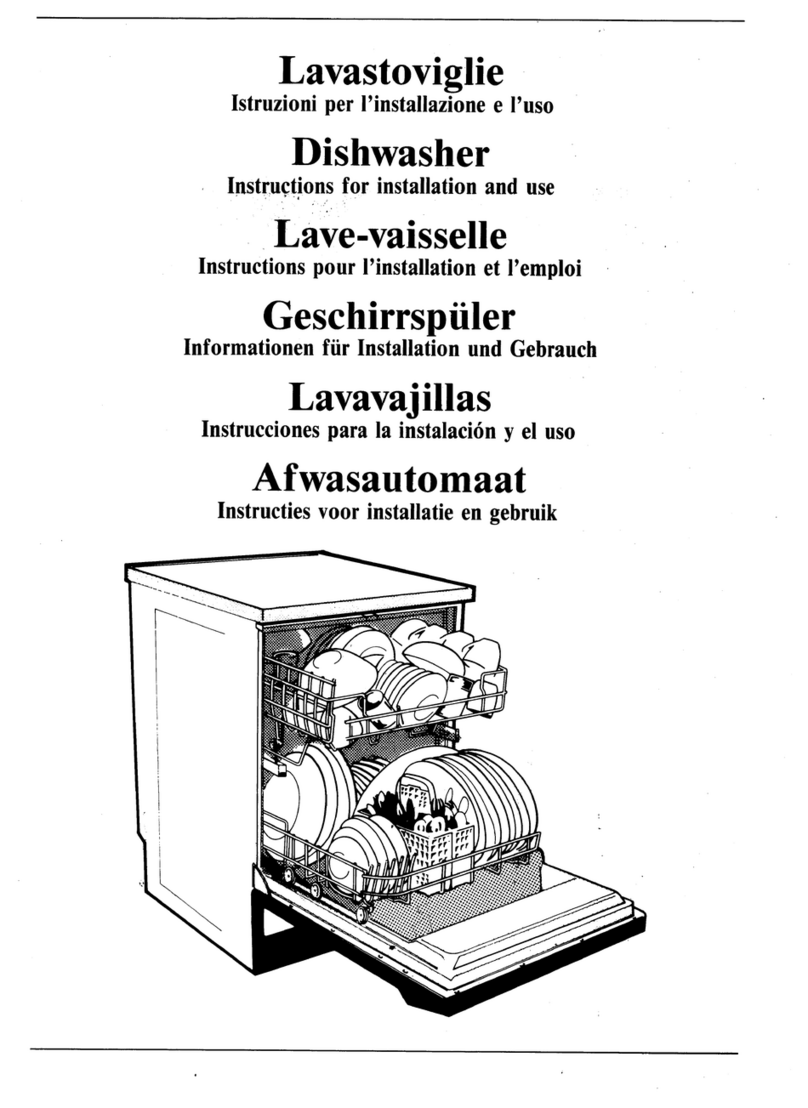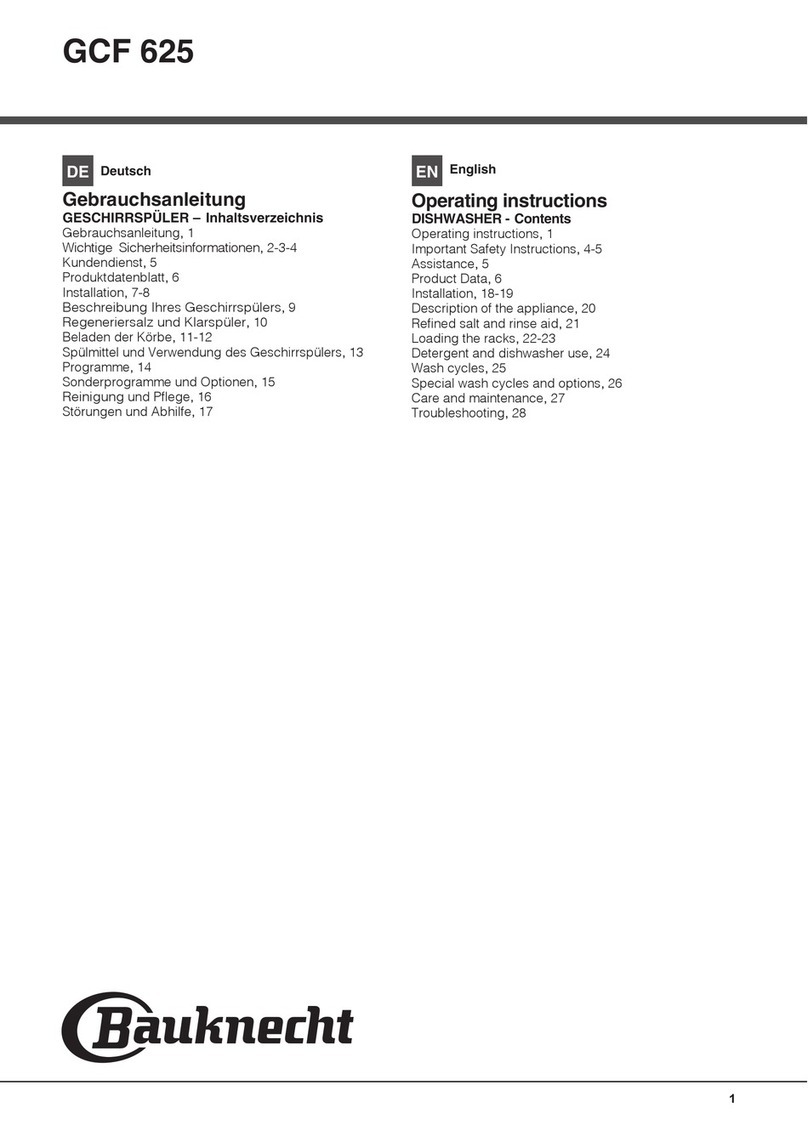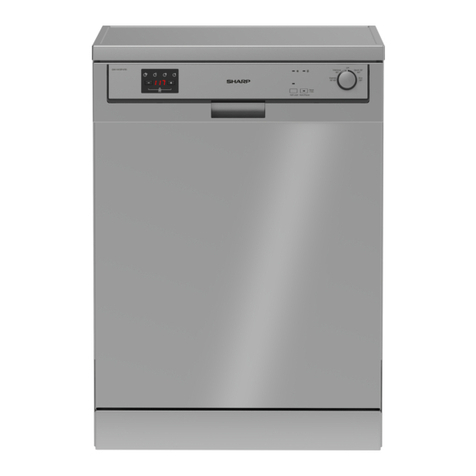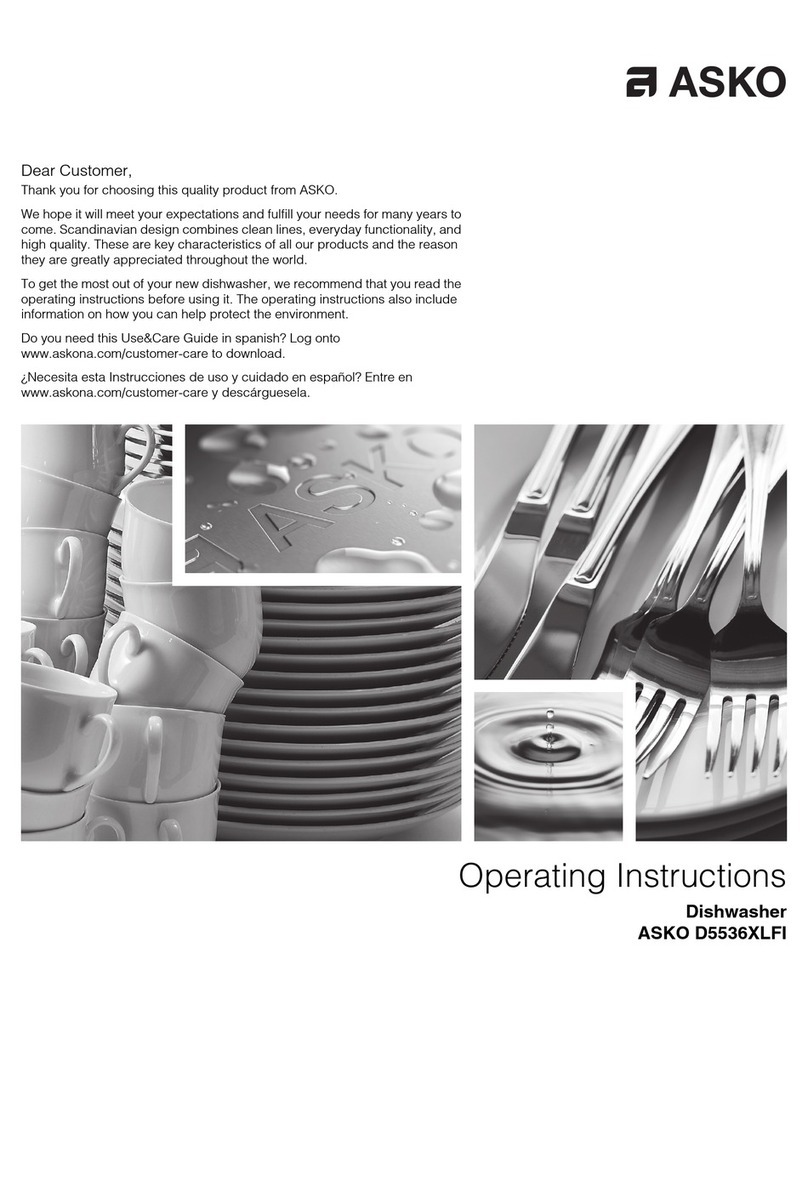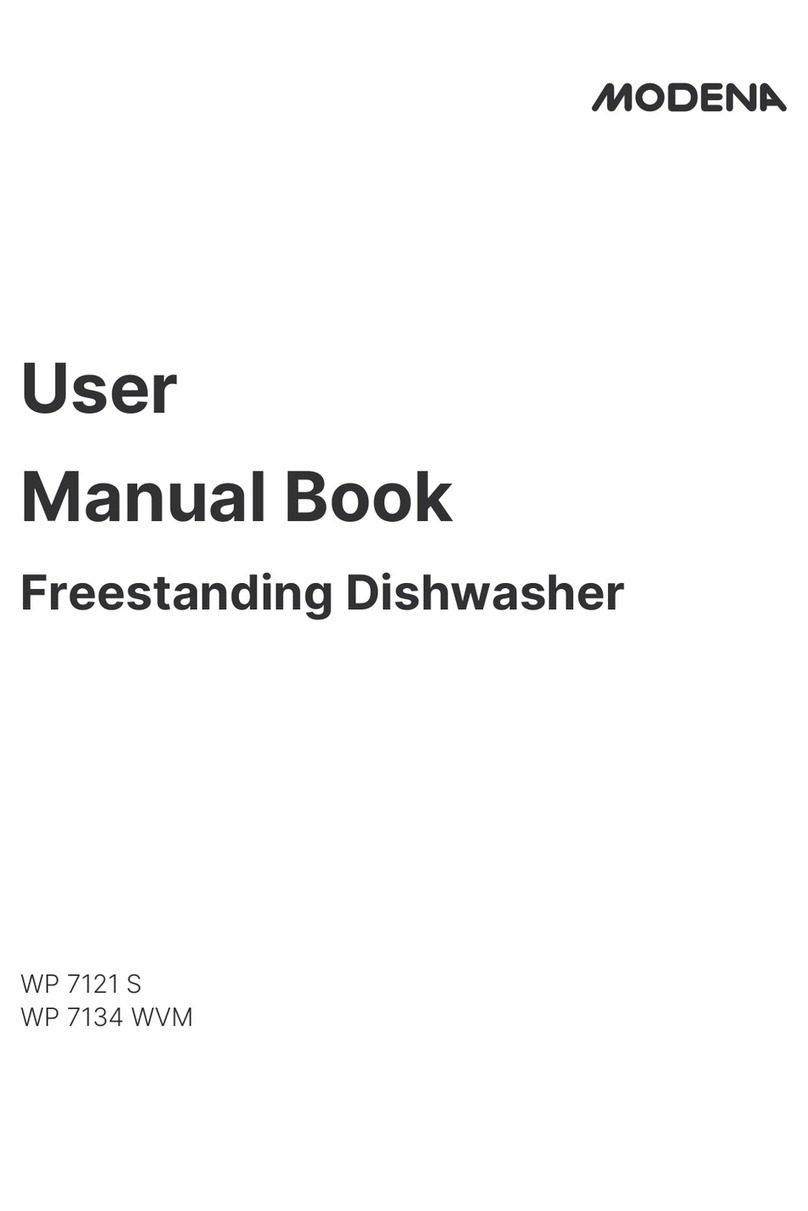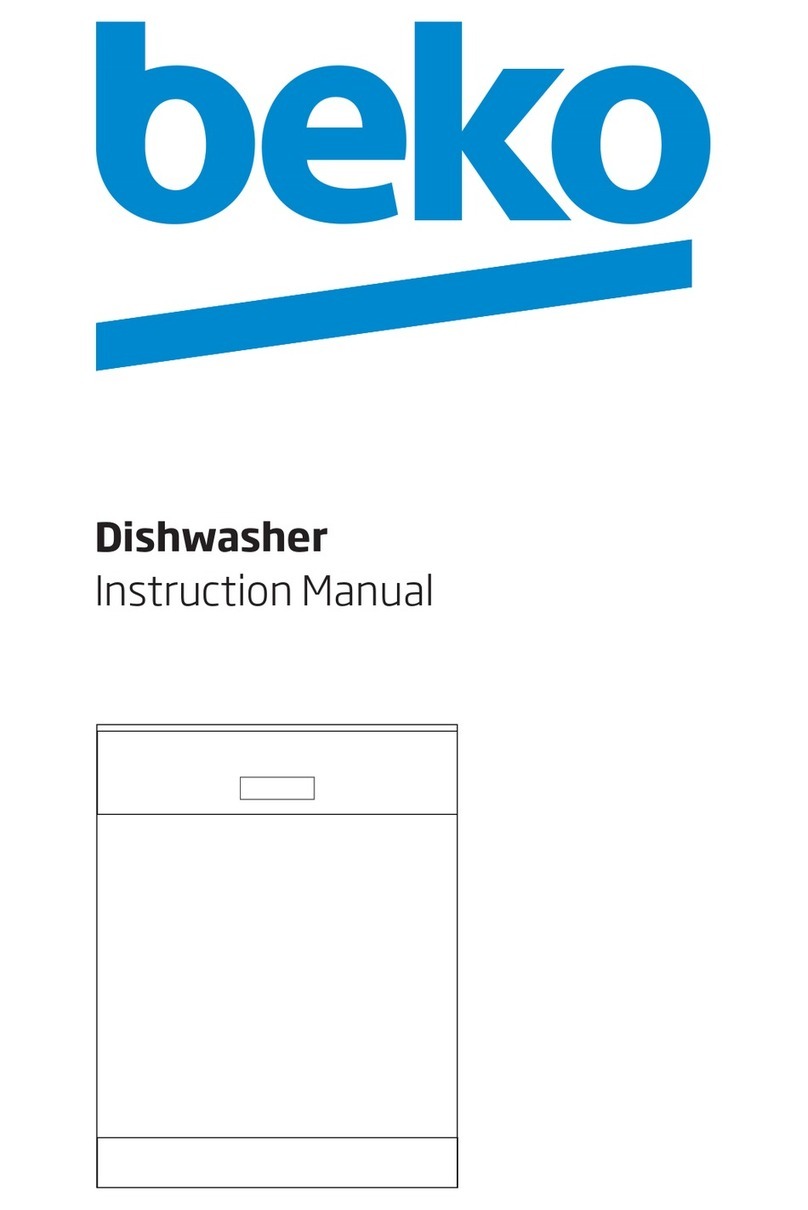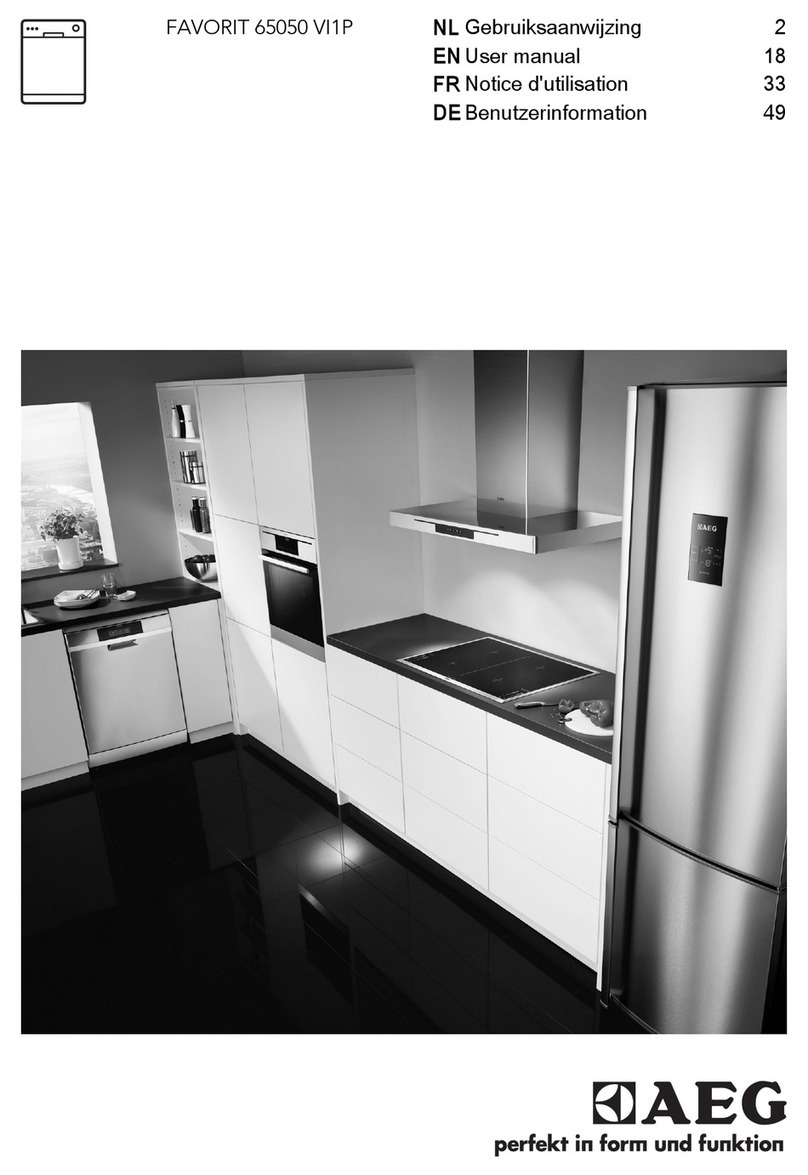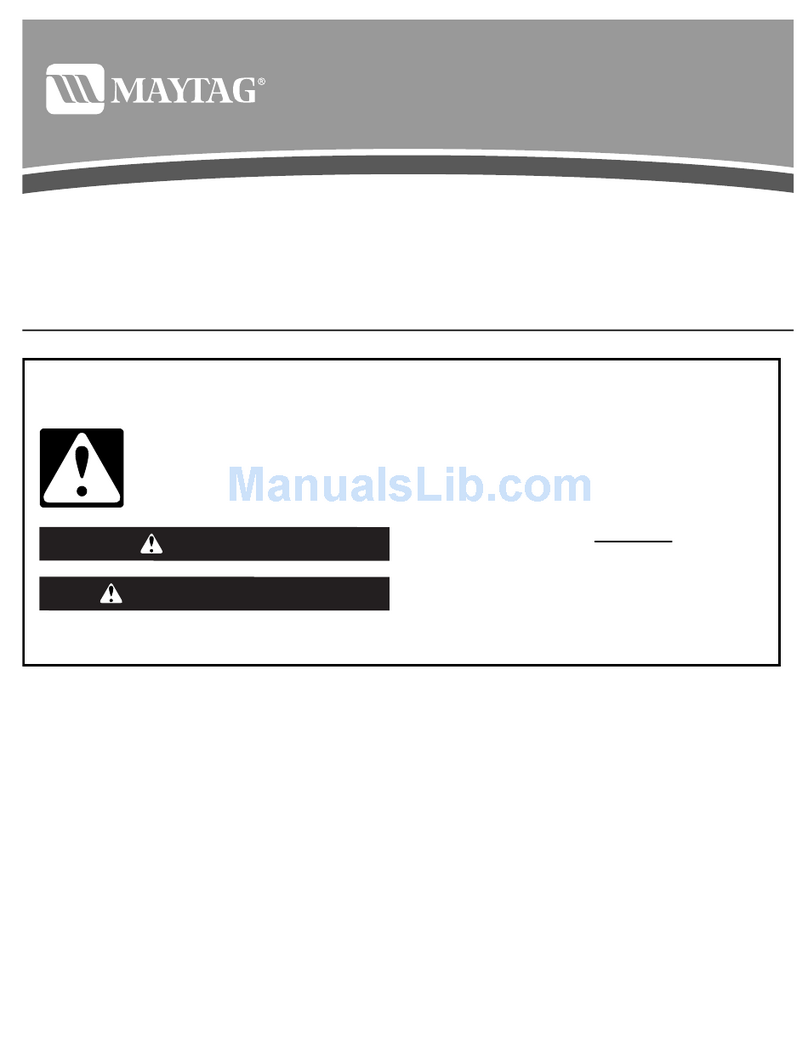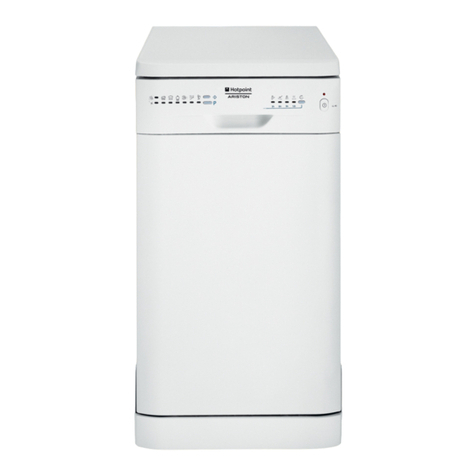Under certain conditions, Hydrogen gas may be produced in a hot-water system that has not been used for
two weeks or more. HYDROGEN GAS IS EXPLOSIVE.
If the hot-water system has not been used for such a period, before using the dishwasher turn on all
hot-water faucets and let the water flow from each for several minutes. This will release any accumulated
hydrogen gas. As the gas is flammable, do not smoke or use an open flame duringthistime.
1
Keep child away from detergent and rinse aid, keep
child away from the open door of the dishwasher,
there could still be some detergent left inside.
Do not abuse, sit on, or stand on the door or dish
rack of the dishwasher.
Do not touch the heating element during or
immediately after use.
Do not wash plastic items unless they are marked
dishwasher safe or the equivalent. For plastic
items not so marked, check the manufactures
recommendations.
Use only detergent and rinse additives designed
for an automatic dishwasher. Never use soap ,
laundry detergent, or hand washing detergent
in your dishwasher. Keep these products out of
children.
During installation, the power supply must not
be excessively or dangerously bent or flattened.
The door should not be left in the open position
since this could present a tripping hazards.
Do not tamper with controls.
Do not operate your dishwasher unless all
enclosure panels are properly inplace. Open the
door very carefully if the dishwasher is operating,
there is a risk of water squirting out.
Do not place any heavy objects of stand on the door
when it is open. The appliance could tip forward.
When loading items to be washed:
1) Locate sharp items so that they are not likely to
damage the door seal;
2) Load sharp knives with the handles up to reduce
the risk of cut-type injuries.
When using your dishwasher, you should prevent
plastic item from contacting with heating element.
If the supply cord is damaged, it must be replaced
by the manufacturer or its service agent or a
similarly qualified person in order to avoid a
hazard.
Please dispose of packing materials properly.
Use the dishwasher only for its intended function.
Remove the door to the washing compartment when
removing an old dishwasher from service or discarding it.
The appliance is not intended for use by young
children or infirm persons without supervision.
Dishwasher detergents are strongly alkaline,they
can be extremely dangerous if swallowed.Avoid
contact with skin and eyes and keep children away
from the dishwasher when thedoor is open.
Young children should be supervised to ensure that
they do not play with the appliance.
Check that the detergent receptable is empty after
completion of the wash cycle.
This appliance complies with international
safety standards, and is fitted with a plug with
earthconnectiontoensurecompleteearthing
of the product.
Before connecting the appliance to the mains
supply it is important to ensure:
That the supply socket is properly earthed.
That your electricity supply is capable of
meeting the consumption requirements
listed on the rating plate of your appliance.
Ensure that your product is properly earthed. In the
absence of adequate earthing you will notice that when
touching the metal parts of your appliance an
electrical dispersion can be felt, due to the presence of
a radio interference suppressor.
This appliance complies with Directives
89/336/EEC, 73/23/EEC and following changes.
Cutlery is washed best if it is placed in the basket with
handles downwards.
knives and other utensils with sharp points must be
loaded in the basket with their points down or placed in a
horizontal position.
Warning:
Important: when the appliance location is on carpet
floors, attention must be paid so as to ensure that
there is no obstruction to the bottom vents.

